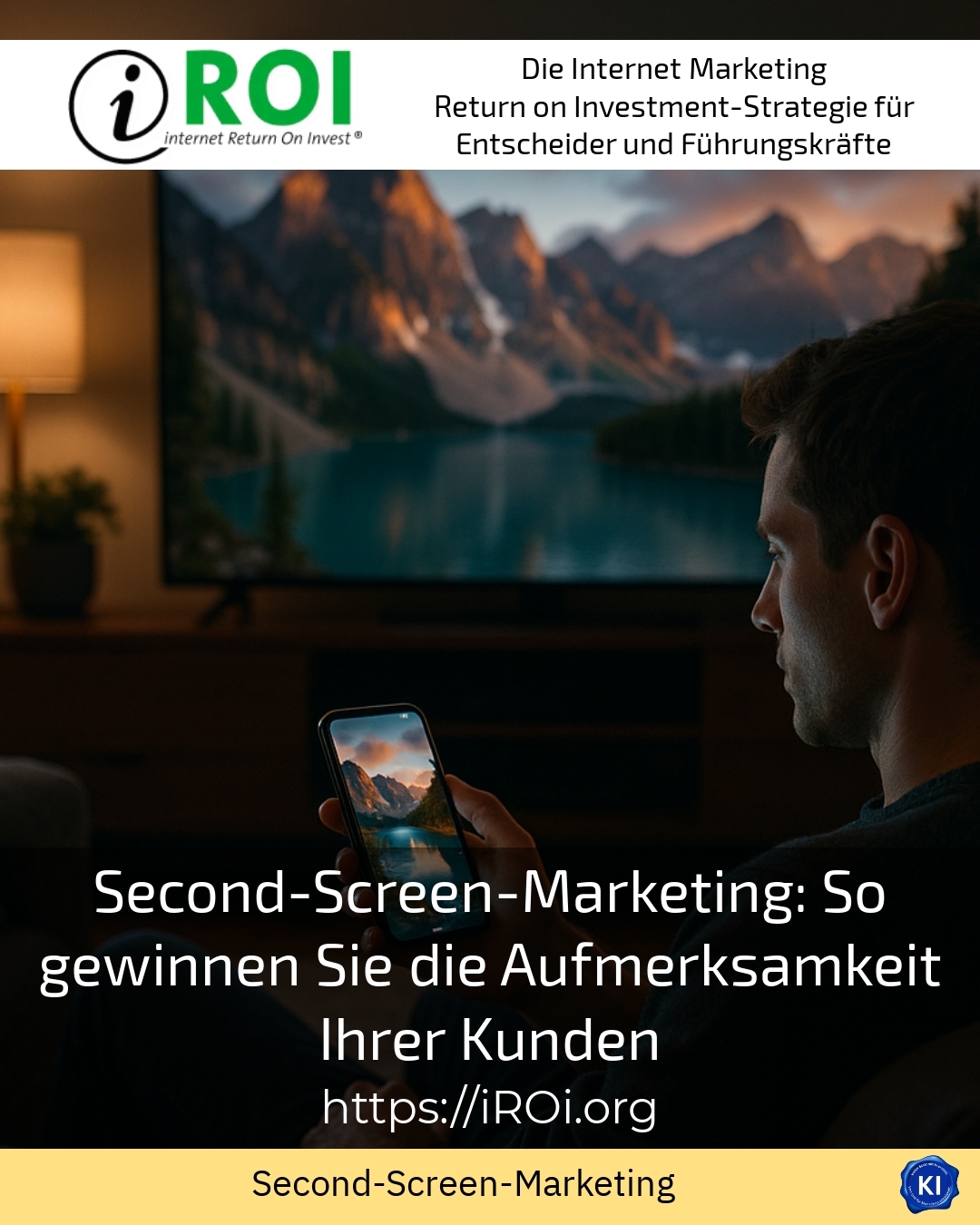The trend towards second-screen marketing has increased significantly in recent years. Brands are utilising the parallel use of screens to reach their target groups more effectively. Second-screen marketing makes it possible to capture the attention of customers across multiple screens and increase visibility. This phenomenon is not limited to television, but is also used in other areas such as e-commerce and marketing strategies. By integrating online and offline channels, brands can accompany their customers along the customer journey and use multiple touchpoints to maximise the impact of their campaigns.
What is second-screen marketing?
Second-screen marketing refers to the use of an additional screen while viewing content on a first screen. This can be the case for television, online streaming or even live events. Users turn to smartphones, tablets or laptops to search for more information or to share what they have seen on social networks. This phenomenon offers brands the opportunity to reach their target groups interactively and increase awareness of their products.
Examples from practice
One example of successful second-screen marketing strategies is the combination of out-of-home advertising with online platforms. Companies such as Pinterest and Ströer have developed an integrated framework that combines online adverts with digital out-of-home spaces. This enables brands to accompany their target groups along the customer journey and create a seamless experience [1].
Create interactive experiences
The use of second screen technologies opens up new opportunities to create interactive experiences. In e-commerce in particular, it is important that users can search for products on an additional screen while watching TV and order them directly. This approach not only strengthens the link between TV and online, but also increases the conversion rate through targeted advertising and mobile targeting [2].
Advantages of second-screen marketing
Another advantage of second-screen marketing is the possibility of increasing the impact of advertising messages. The simultaneous display of adverts on several screens can significantly increase user attention. In addition, the second-screen approach offers the opportunity to interact directly with the target groups and thus increase the success of marketing campaigns [4].
Practical applications
Practical applications of second-screen marketing range from the development of special apps that make TV programmes more interactive to the linking of CTV with mobile devices. For example, brands can refine their CTV targeting by integrating smartphone usage data and measure the efficiency of their campaigns [6].
Success stories in marketing
There are numerous successful examples of second-screen marketing. One example is the synchronisation of TV and online advertising to increase brand awareness. By using ACR technology, advertisers can link their TV adverts with online advertising in real time and thus increase the effectiveness of their campaigns [12].
BEST PRACTICE with one customer (name hidden due to NDA contract)A prominent fashion company used second-screen marketing to increase the visibility of its products. By combining TV adverts with interactive online offers, the company was able to increase the purchase incentives for its customers and strengthen the connection with potential buyers.
My analysis
Overall, second-screen marketing offers comprehensive opportunities to reach and interact with target groups. By integrating different screens, brands can accompany their customers more effectively and increase the impact of their campaigns. As a coaching provider for brands, our aim is to utilise the potential of second-screen marketing and to accompany companies on their way to more successful marketing strategies.
Further links from the text above:
For more information you can visit the following sources:
Pinterest and Ströer launch new second screen approach
New technologies for second screen applications
Second screen explained simply
For more information and if you have any questions, please contact Contact us or read more blog posts on the topic internet Return on Investment - Marketing here.
















